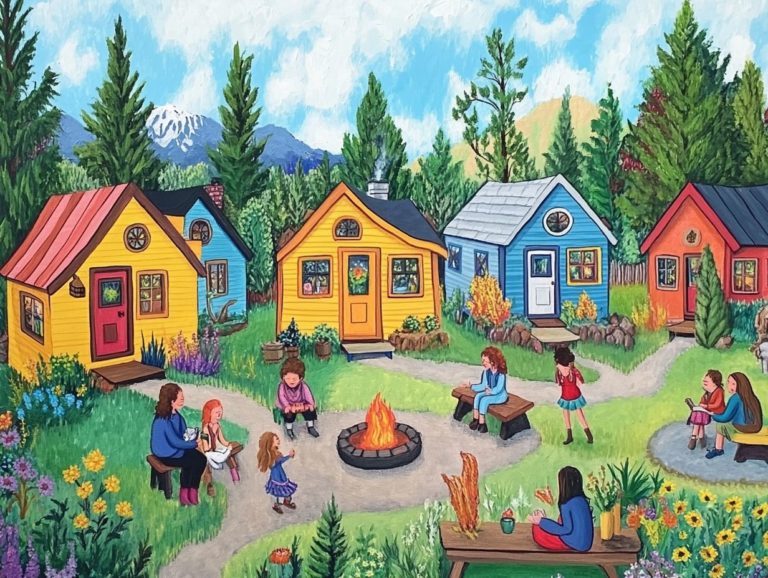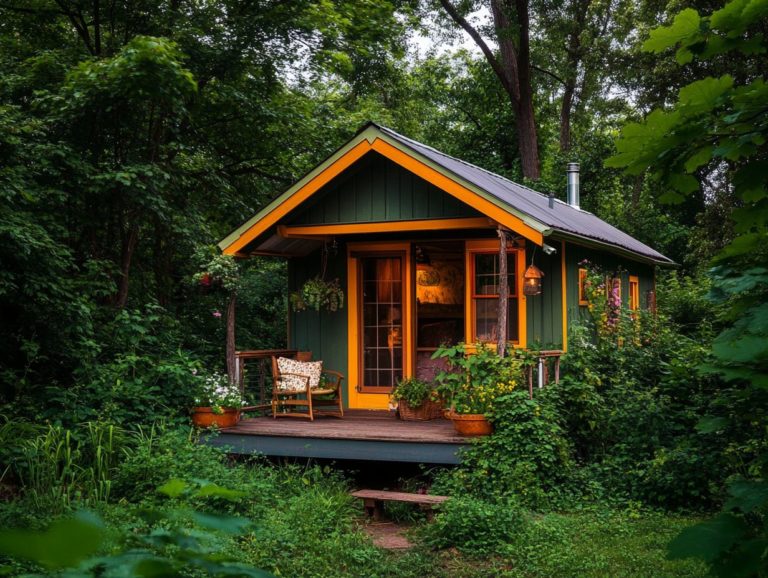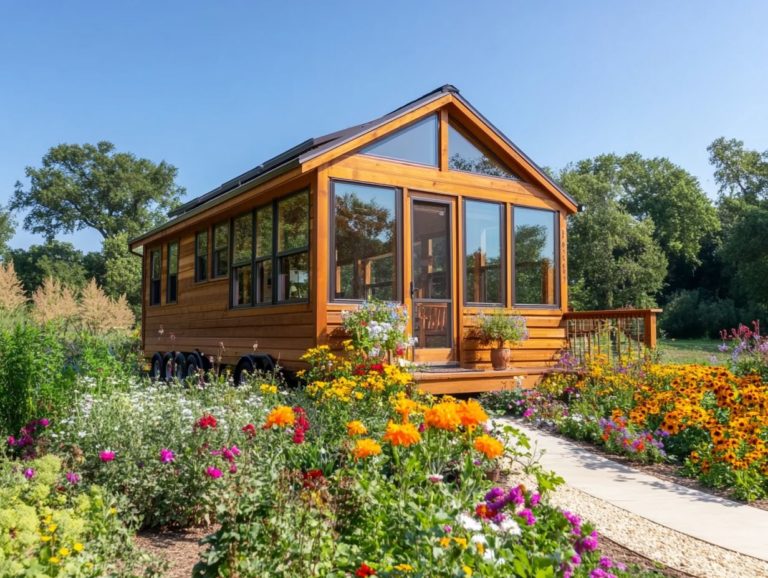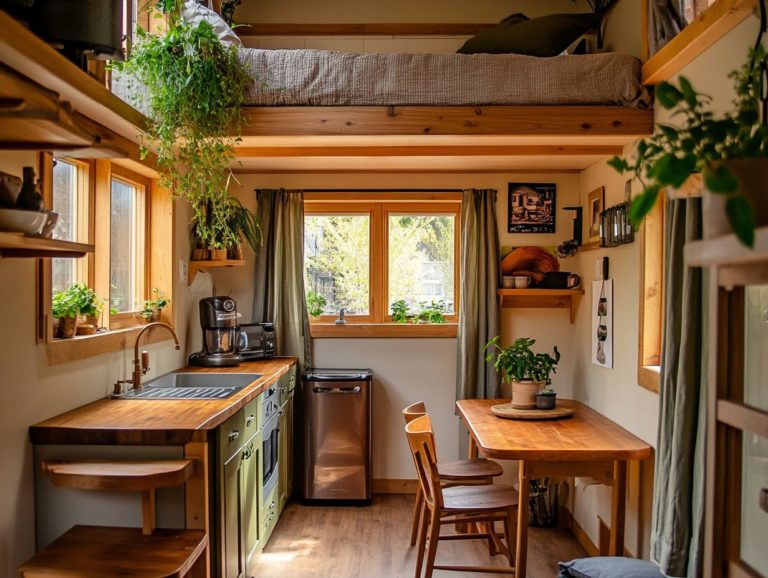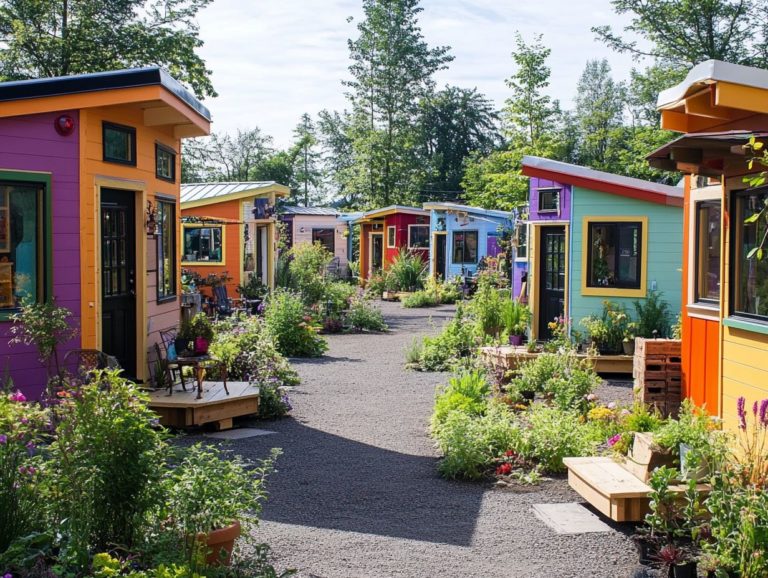Adapting to Tiny House Living Challenges
Tiny house living transcends mere trendiness; it embodies a lifestyle choice that offers both financial freedom and a minimized environmental footprint.
Embracing this downsizing journey presents its own unique challenges, from adapting to limited space to grappling with intricate rules about where buildings can be placed.
This article delves into the myriad benefits of tiny house living, addresses potential obstacles, and equips you with practical tips for a seamless transition. Whether you’re intrigued by minimalism or poised to take the plunge, you’ll find valuable insights tailored just for you.
Contents [hide]
- Key Takeaways:
- Benefits of Tiny House Living
- Challenges of Tiny House Living
- Overcoming Tiny House Living Challenges
- Tips for a Successful Transition to Tiny House Living
- Frequently Asked Questions
- What are the biggest challenges when adapting to tiny house living?
- How do I downsize my belongings to fit into a tiny house?
- Is it possible to live comfortably in a tiny house?
- What are some tips for making the most of limited space in a tiny house?
- How can I adapt to the psychological challenges of tiny house living?
- Can I still entertain guests in a tiny house?
Key Takeaways:
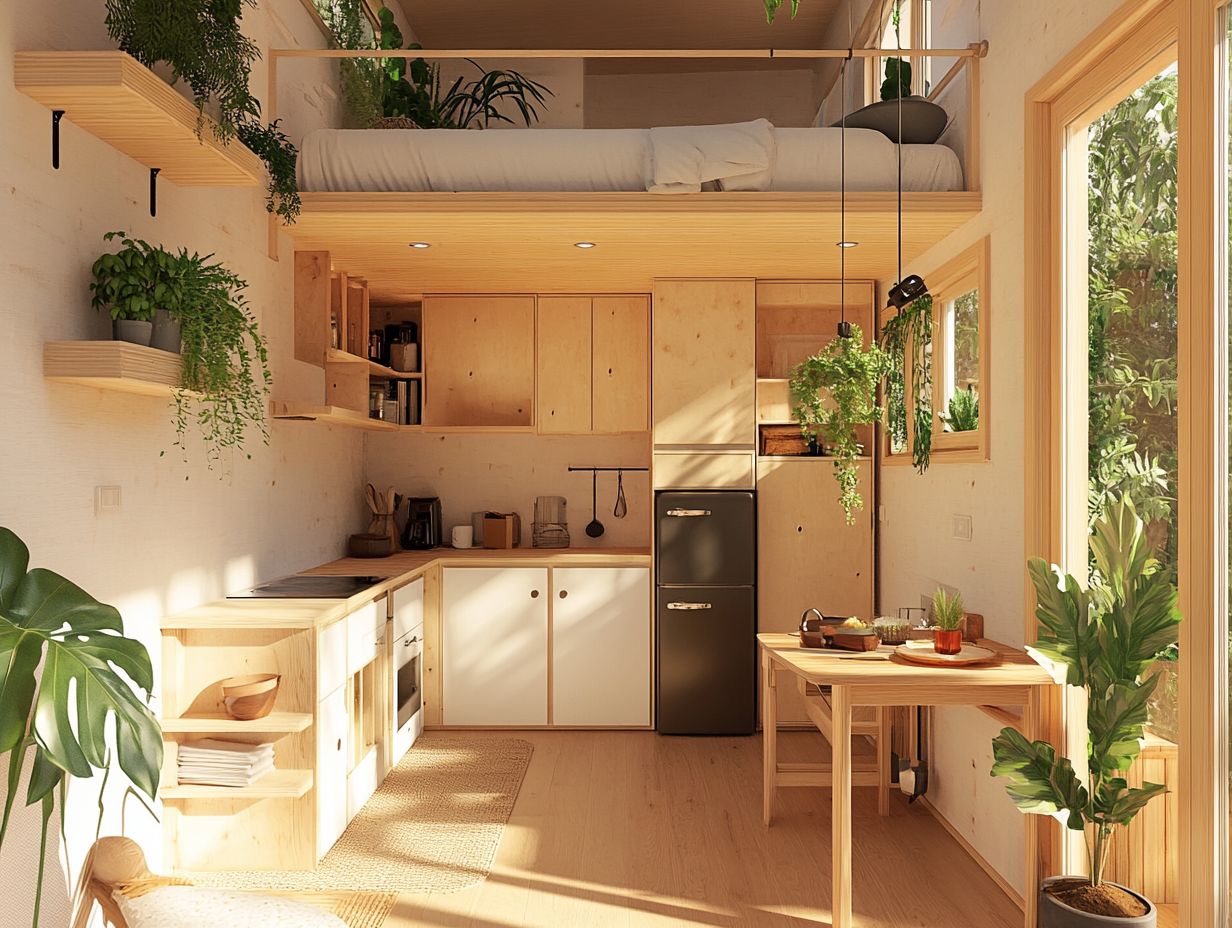
- Adapting to tiny house living can have many financial and environmental benefits, such as reduced expenses and a smaller carbon footprint.
- The challenges of tiny house living include adjusting to a smaller space and navigating legal and zoning issues.
- To overcome these challenges, it’s important to maximize space and storage. Being knowledgeable about zoning regulations is essential. Preparing yourself mentally and emotionally and creating a functional space can lead to a successful transition to tiny house living.
What is Tiny House Living?
Tiny house living is a lifestyle choice that champions simplicity, minimalism, and sustainability, enabling you to live in compact homes that resonate with your values of environmental consciousness and financial freedom. Originating in the USA, this movement has gained traction, reflecting a profound shift towards a more intentional way of life in response to rising living costs and environmental challenges.
Historically, the tiny house movement can be traced back to the post-World War II era, when families sought practicality amidst big changes in society. Today, this approach to housing challenges the conventional notion of larger, more complex structures, instead embracing smaller designs that cultivate a sense of community and connection.
By prioritizing essential possessions and meaningful experiences over material accumulation, you may discover a renewed appreciation for life s simple joys. This model drastically cuts down on waste and invites innovative uses of space, fostering vibrant communities centered around shared values of sustainability and collaboration.
Benefits of Tiny House Living
The benefits of tiny house living go far beyond just financial savings. Embracing this lifestyle allows you to significantly reduce your environmental footprint, cultivate a sense of community, and enhance your personal well-being.
It presents a compelling alternative for those like you who are in search of both affordability and sustainability.
Financial and Environmental Advantages
Tiny houses present you with remarkable financial and environmental benefits, enabling you to achieve financial freedom through reduced living costs and lower utility expenses, all while minimizing your carbon footprint.
When you choose a tiny house, you often enjoy significantly lower mortgage costs, making homeownership more accessible without the weight of crippling debt. The smaller living space typically results in reduced property taxes, offering you even more financial relief.
By incorporating energy-efficient solutions like solar panels and high-quality insulation, you not only lower your utility bills but also bolster the sustainability of your home.
Using eco-friendly materials in construction further supports a greener future, allowing your homeownership journey to align with a commitment to protecting the environment. You can relish the comforts and security of your personal space while knowing you re contributing positively to the planet.
Challenges of Tiny House Living
Tiny house living offers numerous advantages, yet it also introduces practical challenges that you must adeptly navigate. This includes the often daunting task of downsizing your belongings, discovering efficient storage solutions, and adapting to cooking within the confines of a limited kitchen space.
Adjusting to a Smaller Space
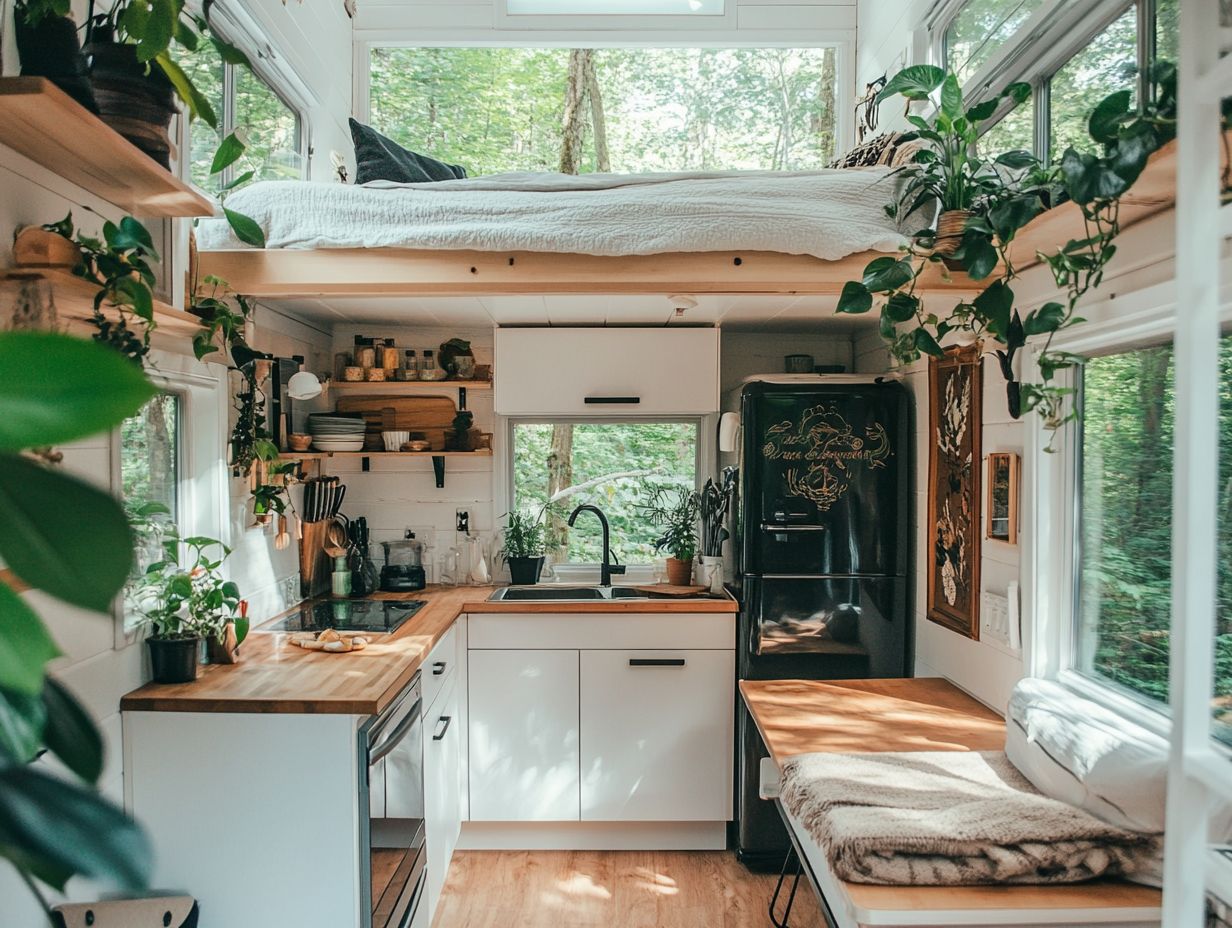
Adjusting to a smaller space in a tiny house requires significant lifestyle changes. You ll need to find ways to stay organized and focus on space efficiency.
To thrive in this compact environment, you must embrace innovative storage solutions. Think about installing shelves above doorways or using under-bed storage to discreetly tuck away essential items.
Selecting multi-functional furniture, or furniture that serves more than one purpose, can dramatically enhance your tiny living area. A coffee table that doubles as a storage unit can transform a cluttered room into an organized oasis.
By prioritizing your belongings wisely, you can create a harmonious balance that maximizes your space and fosters a more intentional way of living in your compact home.
Get Ready to Tackle Legal and Zoning Issues
Understanding the rules for tiny houses can feel like navigating a labyrinth. Each state and municipality has unique building codes and zoning laws that impact tiny house living.
It’s essential to know these regulations if you are considering this lifestyle shift. Not complying could lead to fines or even the forced removal of your home. Some areas may prohibit tiny houses on wheels, while others might restrict connections to utilities. For those interested in this unique way of living, designing a tiny house for family living can help navigate these challenges.
Researching property regulations that dictate land use can limit where these compact dwellings can be situated. Without a solid understanding of local building codes, the dream of tiny living can quickly turn into a logistical nightmare. Exploring compact dining solutions for tiny house living can also help maximize space in these unique homes.
Overcoming Tiny House Living Challenges
Tackle the challenges of tiny house living with innovative solutions to maximize space and storage effectively. You ll also need to navigate zoning regulations that influence where you can place your tiny home.
Maximizing Space and Storage
Maximizing space and storage in a tiny house requires you to employ smart ways to keep things tidy. Every square foot should be utilized to its fullest potential.
By integrating vertical storage solutions think wall-mounted shelves and hooks you can capitalize on otherwise unused wall space. This keeps the floor area open and functional.
Choosing furniture that serves dual purposes, like a sofa bed or a coffee table with built-in storage, can significantly enhance your available space. These approaches, combined with efficient organization of your belongings, will create a more spacious and inviting environment.
Prioritizing decluttering and utilizing storage bins not only elevates the aesthetics of tiny living spaces but also instills a sense of order, making everyday life much more manageable.
Navigating Zoning Regulations
Navigating zoning regulations is essential for anyone considering tiny house living. Understanding the rules about tiny houses can profoundly affect the viability of your tiny house dreams.
Regulations can vary dramatically from one locality to another, influencing where you can place your tiny home and its design and infrastructure requirements.
For example, in some parts of California, strict rules limit tiny houses on permanent foundations. Meanwhile, tiny house communities in Oregon thrive due to supportive zoning laws that promote innovative living solutions.
Neglecting to research these local regulations could lead to legal disputes, hefty fines, or even the forced removal of your beloved home. This highlights the necessity of informed planning as you embark on your tiny house journey.
Tips for a Successful Transition to Tiny House Living
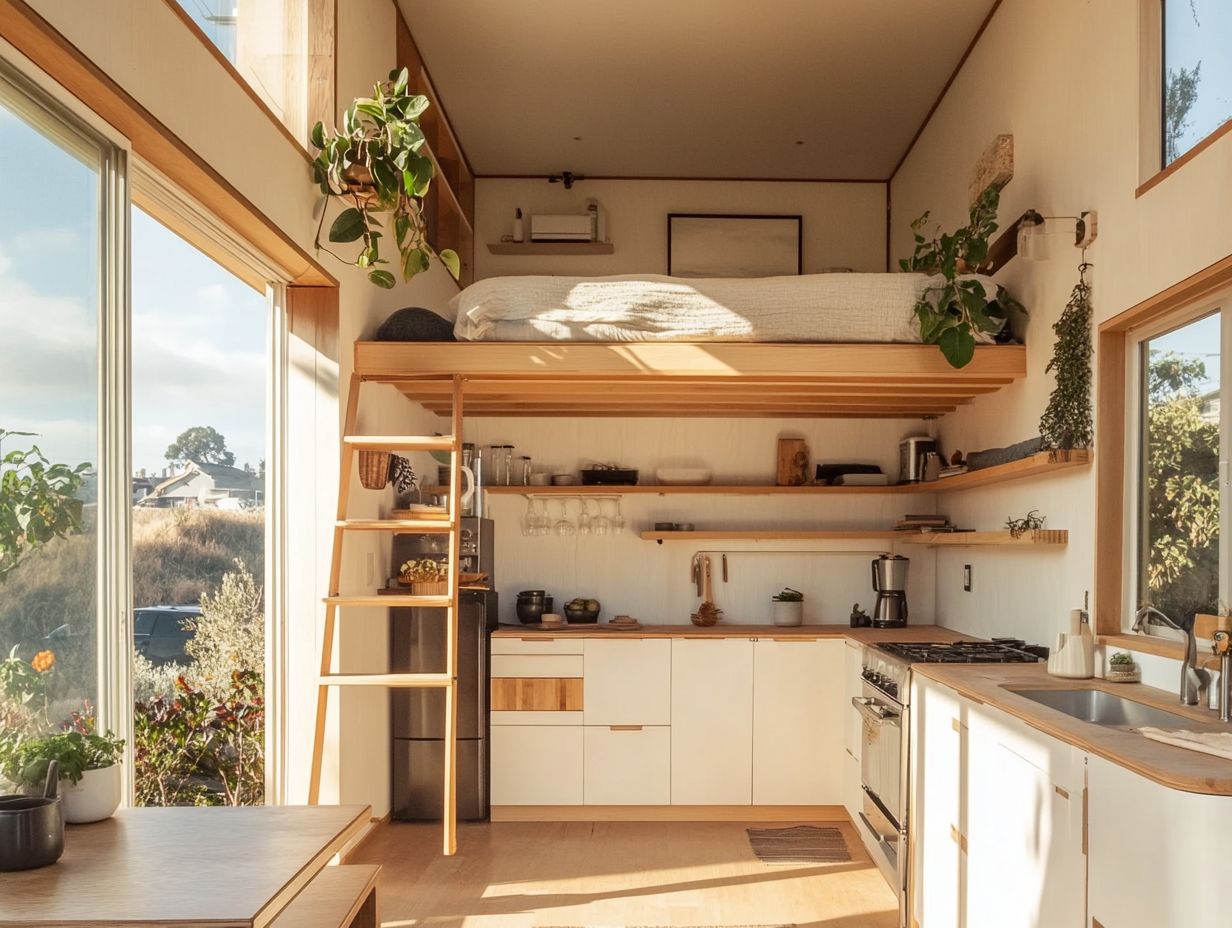
A successful transition to tiny house living requires you to prepare both mentally and emotionally for the lifestyle changes that lie ahead. Embracing the emotional value of your new compact home helps you recognize the unique advantages it brings.
As you embark on this journey, take time to explore customization options that align with your individual needs. This ensures that your tiny space truly reflects your personality and sustainable lifestyle.
Preparing Mentally and Emotionally
Preparing yourself for tiny house living is essential. The process of downsizing and adopting a minimalist lifestyle can significantly affect your feelings and overall happiness.
Transitioning to a smaller space may evoke a mix of emotions. You may feel excitement and anxiety as you let go of cherished possessions and familiar environments. Recognizing these emotional hurdles is the first crucial step toward a positive mindset.
Embracing minimalism offers a unique opportunity to focus on what truly matters. This approach helps clear away not just physical clutter but also mental baggage.
Crafting a thoughtful plan that includes decluttering, setting realistic expectations, and nurturing gratitude for the space you have can significantly ease the psychological strains of this transition.
Incorporating mindfulness practices like meditation can help you maintain emotional balance. This allows you to fully appreciate the myriad benefits of your new lifestyle.
Creating a Functional and Comfortable Space
Creating a functional and comfortable space in your tiny house requires thoughtful design choices and customization options tailored to your lifestyle.
By considering the layout, storage solutions, and multi-purpose furniture, you’ll love how these choices elevate your living experience. Innovative designs, such as foldable tables and hidden compartments, conserve space while adding a distinctive character to your home.
Furthermore, adding personal touches like your favorite colors, artwork, and family memorabilia can transform a minimalist setting into a cozy sanctuary.
Incorporating natural light through well-placed windows and open spaces fosters a connection with the outdoors, making your compact lifestyle feel both expansive and inviting.
Frequently Asked Questions
What are the biggest challenges when adapting to tiny house living?
Some common challenges include adjusting to limited space, downsizing belongings, and embracing a simpler lifestyle. This often includes travel flexibility and addressing practical challenges.
How do I downsize my belongings to fit into a tiny house?
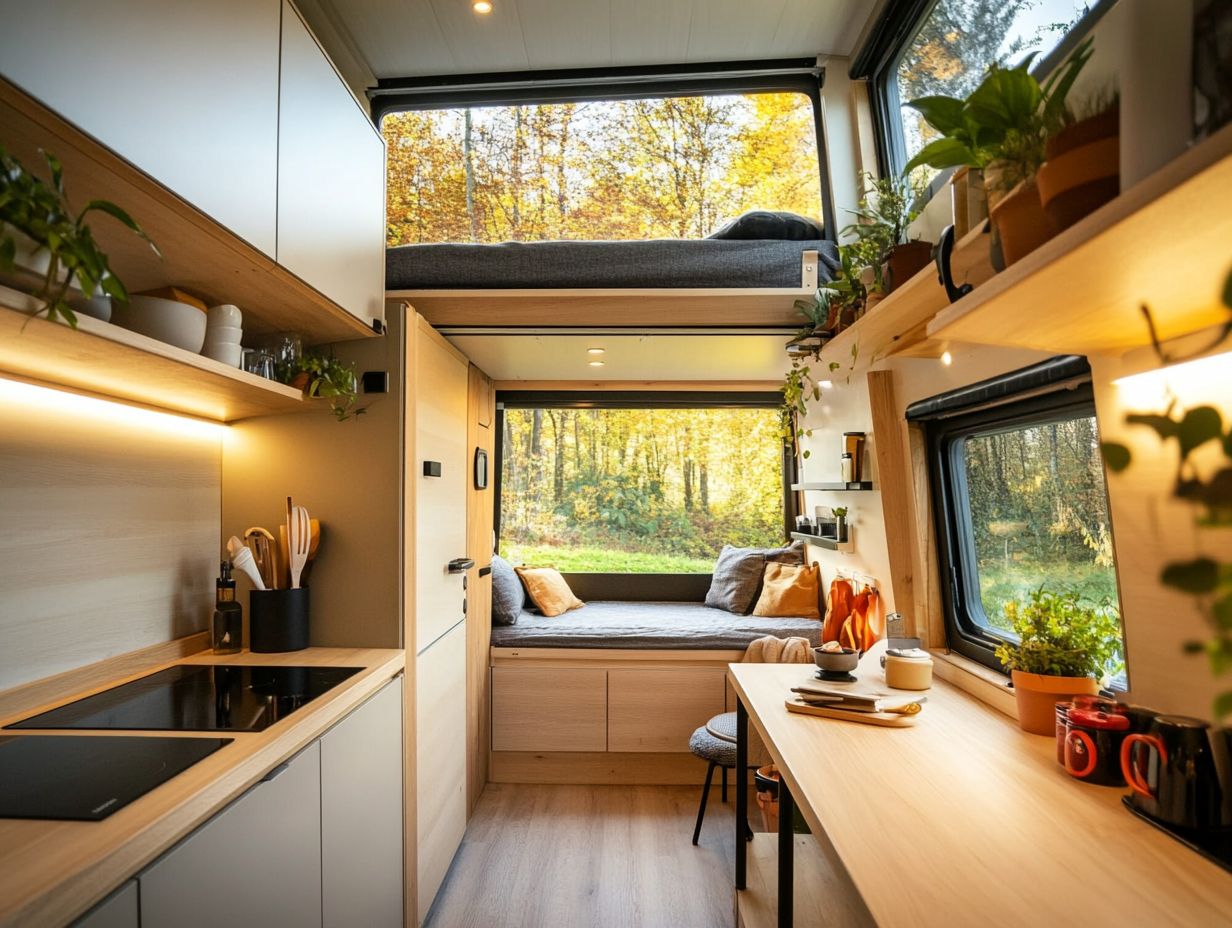
Start by categorizing your belongings and keeping only the essentials. Consider selling, donating, or storing items that won t fit in your tiny house.
Is it possible to live comfortably in a tiny house?
Yes! With careful planning and organization, you can live comfortably in a tiny house. Many discover that this simplified lifestyle brings peace and reduces their carbon footprint.
What are some tips for making the most of limited space in a tiny house?
Use furniture that serves more than one purpose, like a sofa that becomes a bed. Make sure to keep clutter at bay to maximize your space!
How can I adapt to the psychological challenges of tiny house living?
Adjusting to a smaller space can be tough, but it has great benefits, like lower bills and less environmental impact. Personalize your space for comfort with smart technology or eco-friendly touches.
Can I still entertain guests in a tiny house?
Absolutely! Get creative with your seating arrangements. Host outdoor gatherings or plan for overnight guests with a pull-out bed or nearby hotel options.

